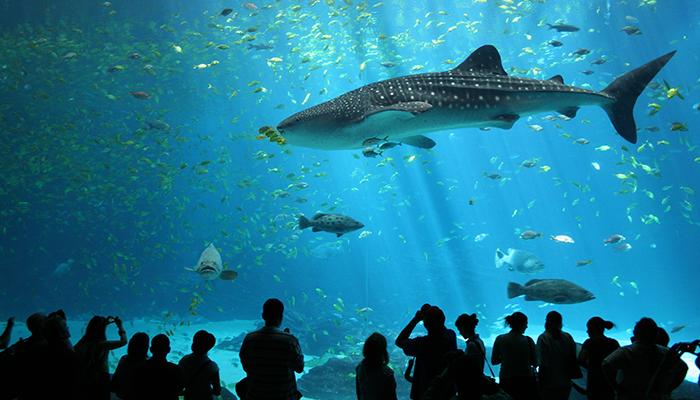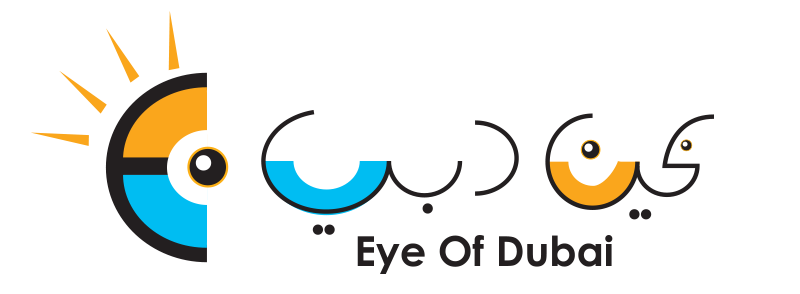
UAE aims to increase aquafarming output, restock seas
The UAE aims to boost the current local aquafarming industry output of about one per cent to 25 per cent by 2021 to contribute to the country’s food security and eventually replenish the marine resources to address the problem of declining local fish stocks.
This was revealed on Wednesday during the launch of the first Aqua Middle East Conference and Exhibition that will be held from March 16 to 18 in Dubai and hosted by the Ministry of Environment and Water, in partnership with the world’s two biggest aquafarming companies in Norway and Chile.
Aquafarming or aquaculture is the process of breeding, rearing, and harvesting of plants and certain types of marine animals such as fish, crustaceans, molluscs and the like.
The UAE was the first country in the GCC to introduce aquafarming in 1984 but commercial interest in the field only started in 1999. Currently, there are 10 registered aquafarms in the UAE, with nine already operational and the tenth still under process. The farms’ overall output makes up approximately one per cent of the total local fish catch. As of 2013, the UAE has a total annual catch of 73,203 tonnes.
“There are challenges facing the industry here, especially the availability of juveniles because they [aqua farmers] used to import these before. But now with the Shaikh Khalifa Marine Research Centre-Hatchery, we will be providing and producing these local juveniles with high market value,” Dr Rashid Ahmad Bin Fahd, Minister of Environment and Water.
The Shaikh Khalifa centre, located in Umm Al Quwain, will provide the fingerlings and juveniles to aquaculture farmers at cost.
Currently, it has four local species available that are economically valuable: Hamour (Epinephelus coioides), Sobaity seabream (Sparidentex hasta), Sheim (Acanthopagrus datnia), and Gabbit (Rhabdosargus sarba).
Bin Fahd said some parts of the UAE, particularly the East Coast, provide favourable conditions for aquafarming. He said the ministry is ready to help investors set up farms to reduce the burden on the UAE’s natural fish stocks and help promote self-sufficiency.
Besides the provision of juveniles, the ministry also aims to bring the latest technology and technical know-how to local farmers and investors during the conference next week.
Once the industry achieves its desired growth, the next phase is to repopulate the sea, which is already exhausted due to overfishing and unsustainable fishing practices.
A report by an ad hoc committee of the Federal National Council in February revealed that the current rate of exploitation of fish could make many marine species extinct in the next 20 years. The same report said about 80 per cent of fish stocks in the UAE have either been overexploited or depleted.
“Not only is the Shaikh Khalifa Marine Research Centre-Hatchery there to provide the juveniles, it’s also going to do re-stocking programmes to re-stock the sea and make sure that the species that are here and that are of high economical value are taken care of and protected,” Engineer Mariam Mohammad Saeed Hareb, Director, Education and Awareness and Project Management Office at the ministry.
Mariam said the next phases of the programme will focus on studying and growing low survival rate species. It will also determine the specific local fish that the country will focus on just like other countries are known for specific types of fish for export.
This was revealed on Wednesday during the launch of the first Aqua Middle East Conference and Exhibition that will be held from March 16 to 18 in Dubai and hosted by the Ministry of Environment and Water, in partnership with the world’s two biggest aquafarming companies in Norway and Chile.
Aquafarming or aquaculture is the process of breeding, rearing, and harvesting of plants and certain types of marine animals such as fish, crustaceans, molluscs and the like.
The UAE was the first country in the GCC to introduce aquafarming in 1984 but commercial interest in the field only started in 1999. Currently, there are 10 registered aquafarms in the UAE, with nine already operational and the tenth still under process. The farms’ overall output makes up approximately one per cent of the total local fish catch. As of 2013, the UAE has a total annual catch of 73,203 tonnes.
“There are challenges facing the industry here, especially the availability of juveniles because they [aqua farmers] used to import these before. But now with the Shaikh Khalifa Marine Research Centre-Hatchery, we will be providing and producing these local juveniles with high market value,” Dr Rashid Ahmad Bin Fahd, Minister of Environment and Water.
The Shaikh Khalifa centre, located in Umm Al Quwain, will provide the fingerlings and juveniles to aquaculture farmers at cost.
Currently, it has four local species available that are economically valuable: Hamour (Epinephelus coioides), Sobaity seabream (Sparidentex hasta), Sheim (Acanthopagrus datnia), and Gabbit (Rhabdosargus sarba).
Bin Fahd said some parts of the UAE, particularly the East Coast, provide favourable conditions for aquafarming. He said the ministry is ready to help investors set up farms to reduce the burden on the UAE’s natural fish stocks and help promote self-sufficiency.
Besides the provision of juveniles, the ministry also aims to bring the latest technology and technical know-how to local farmers and investors during the conference next week.
Once the industry achieves its desired growth, the next phase is to repopulate the sea, which is already exhausted due to overfishing and unsustainable fishing practices.
A report by an ad hoc committee of the Federal National Council in February revealed that the current rate of exploitation of fish could make many marine species extinct in the next 20 years. The same report said about 80 per cent of fish stocks in the UAE have either been overexploited or depleted.
“Not only is the Shaikh Khalifa Marine Research Centre-Hatchery there to provide the juveniles, it’s also going to do re-stocking programmes to re-stock the sea and make sure that the species that are here and that are of high economical value are taken care of and protected,” Engineer Mariam Mohammad Saeed Hareb, Director, Education and Awareness and Project Management Office at the ministry.
Mariam said the next phases of the programme will focus on studying and growing low survival rate species. It will also determine the specific local fish that the country will focus on just like other countries are known for specific types of fish for export.
Share:
ADD TO EYE OF Dubai
MOST POPULAR
The Events Investment Fund Announces Strategic Joint Venture with the World’s Largest Venue Management Operator
Thursday 11 December, 2025 10:51NHC CEO warns of rising land prices
Tuesday 9 December, 2025 1:08Diriyah, Apple sign lease deal to open retail store in Diriyah Square
Tuesday 9 December, 2025 12:57Saudi Arabia, Qatar ink deal to build high-speed electric rail link
Tuesday 9 December, 2025 1:03 ×





























